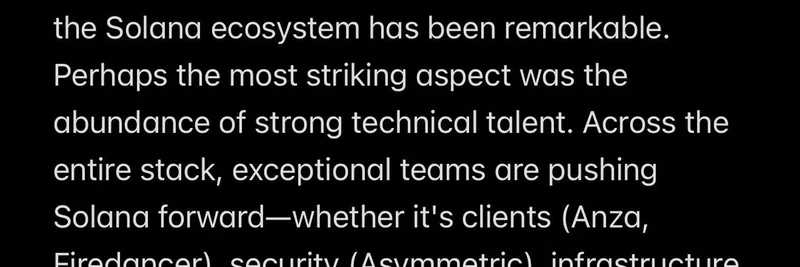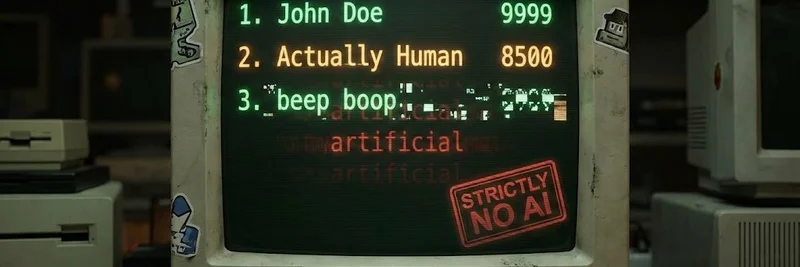Hey there, fellow blockchain explorers! If you're knee-deep in the world of crypto, you've probably heard the buzz about stablecoins transforming how we handle money. Recently, GnosisDAO dropped a tweet that's got everyone talking about the massive potential in stablecoin payments. Let's dive into what this means and why it's a game-changer, especially for those of us tracking meme tokens and broader blockchain tech.
The Tweet That Sparked the Conversation
On August 15, 2025, GnosisDAO tweeted about their excitement in building the stablecoin payment stack alongside partners like Gnosis Pay and Gnosis HQ. They quoted a post from Keyrock Trading, which unveiled a report titled "Stablecoin Payments, The Trillion Dollar Opportunity." GnosisDAO emphasized their role at the forefront of this innovation and encouraged everyone to read the full report for future insights.
This isn't just hype—it's backed by a detailed analysis co-authored with Bitso and featuring expertise from heavy hitters like Circle, Ripple, Sphere Labs, Ondo Finance, First Digital Labs, BVNK, Conduit, Gnosis Pay, and MANSA. The report paints a picture of stablecoins evolving from simple value holders to powerhouse tools for global payments.
Breaking Down Stablecoins: The Basics
For the uninitiated, stablecoins are cryptocurrencies designed to maintain a stable value, often pegged to fiat currencies like the US dollar. Unlike volatile assets (think Bitcoin or your favorite meme token), they minimize price swings, making them ideal for everyday transactions. The report explains how they're minted—essentially created—against reserves, and how issuers manage those assets to ensure stability.
Fun fact: Major stablecoin issuers now hold more US Treasuries than entire countries like South Korea. This macro-level influence could even affect Federal Reserve policies as stablecoin supply grows to potentially $2 trillion.
The Legacy System's Shortcomings and Stablecoins' Edge
Traditional cross-border payments are a mess—layers of banks, FX desks, and compliance checks that make things slow and expensive. The report calls this a "legacy of layers" and positions stablecoins as the sleek upgrade. With blockchain's real-time transparency and computation, stablecoins cut out intermediaries, speeding up transfers while slashing costs.
Imagine sending money across borders in seconds instead of days, and at a fraction of the fee. That's the promise here, especially in emerging markets where 85% of the world's population lacks efficient financial access.
Building the Stablecoin Payment Stack
The report dives into the "payment stack," which is basically the full ecosystem from issuing stablecoins to settling transactions. It's vertically integrated, meaning companies control multiple layers to monetize through fees, treasury yields, and more. For instance, Gnosis Pay is linking self-custodial wallets directly to Visa debit cards, allowing seamless spending of crypto holdings.
Experts like those from MANSA highlight dynamic liquidity models that replace clunky prefunded accounts with smart credit lines, boosting efficiency.
Real-World Use Cases Driving Adoption
Here's where it gets exciting: The report spotlights B2B (business-to-business), P2P (peer-to-peer), and card-based payments as key drivers.
B2B Treasury Turnaround: Companies can hold yield-bearing stablecoins for payroll or settlements, turning idle cash into productive assets. This contrasts sharply with legacy systems' high costs and delays.
P2P Remittances: Bitso, for example, handles $850 million in US-Mexico flows annually using local stablecoins like MXNB and BRL1. These are up to 13 times cheaper than traditional methods, making remittances faster and more accessible.
Stablecoin-Linked Cards: Volumes have surged from $250 million monthly in early 2023 to $1 billion by early 2025. Gnosis Pay's integration with Visa is a prime example, with transaction volumes growing 57% yearly.
Then there's "Onchain FX," which enables atomic swaps—simultaneous payment and settlement on the blockchain—to rewire foreign exchange, reducing errors and compressing timelines.
The Path to $1 Trillion
The trillion-dollar tag isn't pie-in-the-sky. By 2030, the report projects stablecoin payments could hit this mark across these verticals, fueled by regulatory clarity, better interoperability between blockchains, deeper liquidity, and programmable features. In a bull case, stablecoins could capture 10.4% of the US M2 money supply.
Emerging markets are the hotspot, but even developed economies stand to gain from streamlined operations.
Implications for Meme Tokens and Blockchain Practitioners
While the report focuses on stablecoins, it's a boon for the meme token space too. Stablecoins provide the stable rails needed for trading volatile memes without constant fiat conversions. Imagine seamless payments within meme communities for merch, events, or even DAO contributions. As blockchain practitioners, understanding this stack enhances our toolkit, helping us build more robust, user-friendly dApps that integrate payments effortlessly.
Wrapping It Up
GnosisDAO's tweet is a timely reminder of stablecoins' transformative power. If you're curious, check out the full report PDF for the deep dive. Stay tuned to Meme Insider for more on how these trends intersect with meme tokens and crypto innovations. What's your take on stablecoins hitting $1T—game-changer or just hype? Drop your thoughts below!


